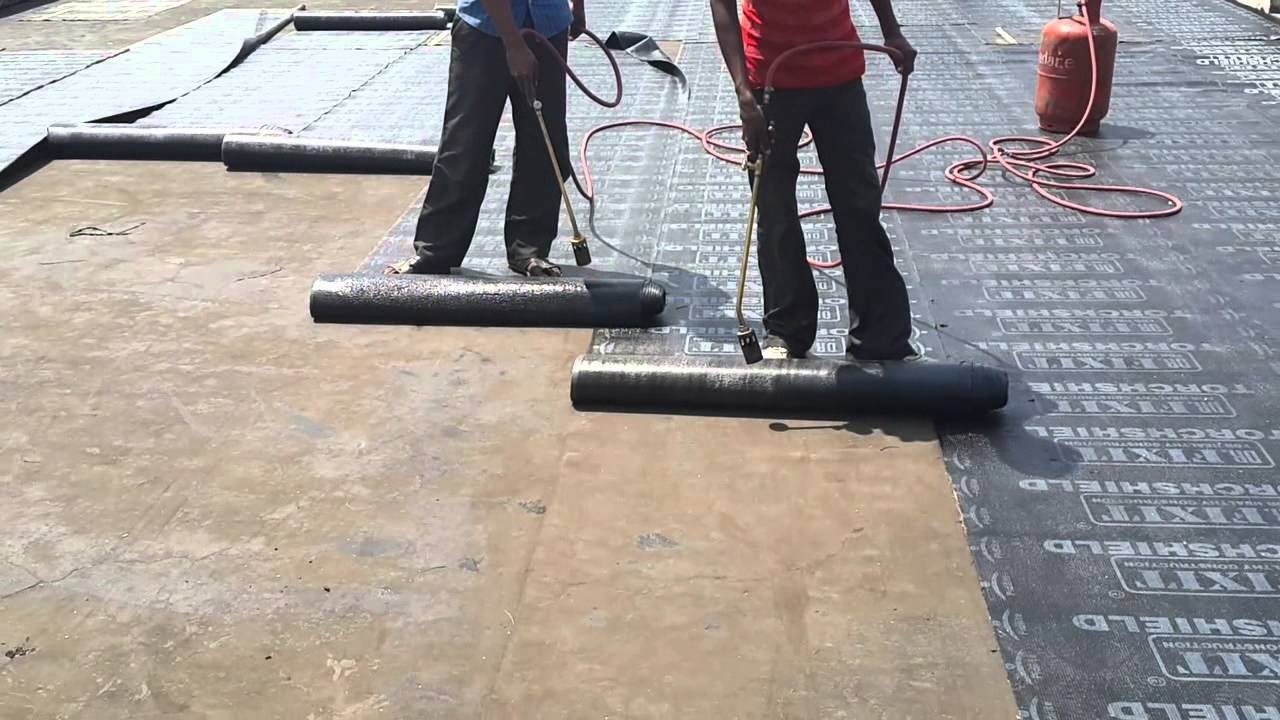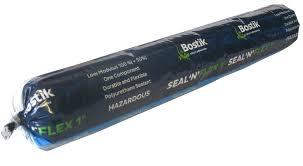Waterproofing is one of the most important prerequisites to maintain the structural integrity of buildings. Waterproofing is especially important in a country like India where heavy rains are a common occurrence in most states. Water usually seeps in after heavy rains causing the paint to peel off which not just ruins the aesthetic appearance but leads to mildew and a musty smell inside the house. If neglected for a long period of time, water seepage can be a threat to the health and well-being of the inhabitants.
This article throws light on some of the most important topics pertaining to waterproofing, benefits, applications, and more. By the time you finish reading this, the haze around waterproofing will clear out for you. So let’s dive straight into it.
Types Of Waterproofing
Waterproofing involves the use of different materials that act as a severe line of defence against extreme weather conditions. There are several methods of waterproofing and the below mentioned points shed light on some of the commonly used waterproof materials and their applications.
1. APP Bituminous Membranes

APP stands for Atactic Polypropylene. APP Polymer Bitumen Membrane is produced with the calendering process which saturates and coats the synthetic carrier with a compound made of special grade of bitumen, modified with APP polymers and fillers. The modifiers are responsible for strengthening the thermal and aging properties of the membrane compound. The mechanical characteristics of the membrane are strengthened by the Polyester carrier that contributes to tear resistance, tensile strength and elongation. This waterproofing method is ideal for applications in curtain walls, basement walls, terrace roofs, balconies, man made ponds, bathrooms, water tanks among other wet surfaces as APP Bituminous membranes are flexible and long lasting.
2. Self adhesive BTS membranes
Self adhesive membrane is characterized by self-sealing properties. Bitumen/asphalt is modified with SBS and high tack resins. A cross laminated high density polyethylene film is made to protect this self adhesive membrane. Self adhesive membrane can be installed without the use of open flames. This waterproofing material is highly resistant to acids and alkalis. Applications of self adhesive membrane include underground applications, retaining walls and planter boxes.
3. TPO membrane
 TPO waterproof membrane is highly effective to achieve a leak-proof roof. TPO is short for thermoplastic polyolefin. TPO is formed when polypropylene and ethylene-propylene rubber are polymerized together. TPO is characterized by hot air welded seams that offer absolute protection against water ingress. It is a single ply roofing membrane that has uses all across the world. TPO membrane is available in different thickness and dimensions for you to choose.
TPO waterproof membrane is highly effective to achieve a leak-proof roof. TPO is short for thermoplastic polyolefin. TPO is formed when polypropylene and ethylene-propylene rubber are polymerized together. TPO is characterized by hot air welded seams that offer absolute protection against water ingress. It is a single ply roofing membrane that has uses all across the world. TPO membrane is available in different thickness and dimensions for you to choose.
4. Liquid membranes
 This waterproofing method involves the use of a monolithic, fully bonded coating which forms an elastomeric waterproof membrane. There are three types of coatings namely PU based coating, acrylic elastomeric coatings and two component acrylic modified cementitious coating. PU based coatings are known to provide long lasting solutions. The coatings are applied by hand or spray. Acrylic elastomeric coatings offer protection for concrete from water infiltration as well as atmospheric gases. Two component acrylic modified cementitious coatings on the other hand can be applied with a brush, roller or trowel to prevent unwanted water penetration in concrete surfaces.
This waterproofing method involves the use of a monolithic, fully bonded coating which forms an elastomeric waterproof membrane. There are three types of coatings namely PU based coating, acrylic elastomeric coatings and two component acrylic modified cementitious coating. PU based coatings are known to provide long lasting solutions. The coatings are applied by hand or spray. Acrylic elastomeric coatings offer protection for concrete from water infiltration as well as atmospheric gases. Two component acrylic modified cementitious coatings on the other hand can be applied with a brush, roller or trowel to prevent unwanted water penetration in concrete surfaces.
5. Bituminous products
Waterproofing with bituminous products is highly effective since bitumen is naturally insoluble in water and coatings made of bitumen serve as effective repellent against water penetration. Structures exposed to harsh environments can immensely benefit from bituminous coatings. The natural water resistant properties of bitumen coupled with strong adhesive properties offer excellent protection against water ingress.
6. Cement based waterproofing method
 This is one of the easiest waterproofing methods that can be used in domestic wet areas such as bathrooms and toilets as well as water treatment plants, bridges, dams, railways and metro systems, parking structures among others.
This is one of the easiest waterproofing methods that can be used in domestic wet areas such as bathrooms and toilets as well as water treatment plants, bridges, dams, railways and metro systems, parking structures among others.
5 Areas Of A House That Need Waterproofing
While water seepage caused due to heavy rains is easily noticeable, small amounts of moisture that find their way through poorly sealed areas can go unnoticed eventually leading to a slew of consequences like gradual weakening of the structure and collapse. The below mentioned points highlight a few important areas that need to be waterproofed without fail.
1. Bathrooms
Bathrooms are constantly exposed to water thus making it one of the areas in your house that deserve the most attention. Excess moisture and leakages are a common sight in most bathrooms. This can be prevented by waterproofing your bathroom’s walls, floor and ceiling. The gaps between the wall and floor tiles need to be sealed. A waterproof paint can protect the bathroom ceilings whereas the area behind the shower needs to have a wallboard that is suitable for moist environments and then sealed.
2. Balconies
Balconies are susceptible to water infiltration due to exposure to winds and rains. Wood framed balconies are more prone to damage in the absence of appropriate waterproofing measures. Waterproofing makes a substrate water resistant through the application of elastic and durable membranes and safeguards against mildew, mold, cracks and UV rays. Waterproofing is essential regardless of whether the structure is wood framed or concrete.
3. Kitchens
Waterproofing is extremely important in the kitchen area where counters, cabinets and backsplashes deserve special attention. Mold can quickly accumulate in the cabinet under the sink owing to leakage. Cracked countertops also contribute to dampness and water seepage. Water seepage in the kitchen can be effectively prevented with the help of surface treatments and joint sealing.
4. Basements
The basement area forms a part of the structure’s foundation and needs to be protected from water damage at all costs. Basements are frequently susceptible to dampness and flooding leading to constant build up of moisture that also spills to other parts of the structure. Waterproofing your basements can increase the utility of the total square feet area and protect your valuable belongings from dampness and humidity.
5. Roofs/terraces
A leaky roof can corrode the steel angles and beams supporting your house. Roofs must therefore be waterproofed to guarantee no water gets inside and damages your structure.
7 Key Benefits of Waterproofing
The most important and obvious benefit of waterproofing is protection against water infiltration. The steel reinforcement used in concrete construction can corrode easily if the water comes in contact with the steel. Water seepage may also cause spalling and cracking, both of which pose a threat to the structural integrity of the property. Waterproofing prevents all that from happening. But there are a few other benefits that come with investing in a good waterproofing solution. Let’s have a look at them:
- By protecting the structure from water infiltration, waterproofing essentially extends the life of the structure.
- It increases property value as the aesthetic appearance will not be compromised making it easier to impress potential buyers and negotiate a higher price.
- Waterproofing leads to a healthy and positive environment as dry surfaces don’t attract mold and fungi.
- Waterproofing also increases energy efficiency. It provides great insulation and gets rid of humid indoor air which puts a strain on coolers and air conditioners.
- It protects the interior work, furniture and other valuable possessions from moisture, which helps improve their longevity and retain their value.
- It prevents the onset of health concerns and keeps diseases like wheezing, eye infection, respiratory illnesses, coughing and skin irritation (common ill-effects of moisture build up) at bay.
- Waterproofing increases the overall well-being of the inhabitants by cutting down unnecessary maintenance costs and reduces stress levels.
3 Main Categories Of Waterproofing
There are three methods to ensure protection of residential basements against ground water. The British Standard 8102:2009 has laid down certain waterproofing best practices to prevent the entry of water from the ground. This serves as a guideline for contractors globally to include waterproofing measures for the structure right from the initial stages of designing and planning. Here are the three methods to ensure protection from water ingress:
1. Type A (Barrier) Protection
Barrier protection refers to the application of waterproof material to the internal or external walls and floor slab of a basement. This kind of waterproofing protection is aimed at creating an effective barrier between the structure and the groundwater. This method is also referred to as tanking. You can apply the waterproof material to the external or internal surface of the wall/floor and also in between wall or floor surfaces which is called sandwiched waterproofing.
2. Type B (Structurally Integral) Protection
Type B protection is about equipping the structure to resist water ingress. The design and materials that go into the structure are of prime importance in this method of waterproofing protection. The quality of workmanship also matters. Structures that are meant to withstand water penetration should be made of reinforced water-resistant concrete or structural steel.
3. Type C (Drained) Protection
Type C protection relies on an internal water management system to tackle the ill effects of water penetration. Groundwater is allowed to penetrate through the external wall of the structure which is collected via a Cavity Drain Membrane to divert it to a safe point of disposal in a controlled drainage system. The Cavity Drain Membrane is responsible for diverting the water into designated drainage channels.
Winding Up
Waterproofing is critical to save properties from the perils of leakage. Water leakages ruin the aesthetic appeal of a structure and lead to deterioration of indoor air quality. Investing in good waterproofing solutions can save you some crucial time and money on maintenance and repairs in the long run. Just like most specializations, waterproofing is a job best left to the experts. It is recommended to consult a reputed waterproofing solutions provider that uses waterproofing products of the finest quality. Experienced professionals with excellent workmanship can help you select and install a waterproofing system that works perfectly for your property and extends its longevity. SHIVSONS is one of India’s pioneering businesses in the roofing, waterproofing, and construction chemicals industries for over 3 decades. They are bona fide waterproofing specialists that deal in the imports of high quality, technologically advanced waterproofing materials. With exceptional customer service and workmanship, Shibam Ventures have emerged as one of the most trusted brands for all waterproofing projects pan India. Get in touch with the team today to discuss your unique requirements and avail customized, market-best waterproofing solutions.




_-_Copy1.jpg)